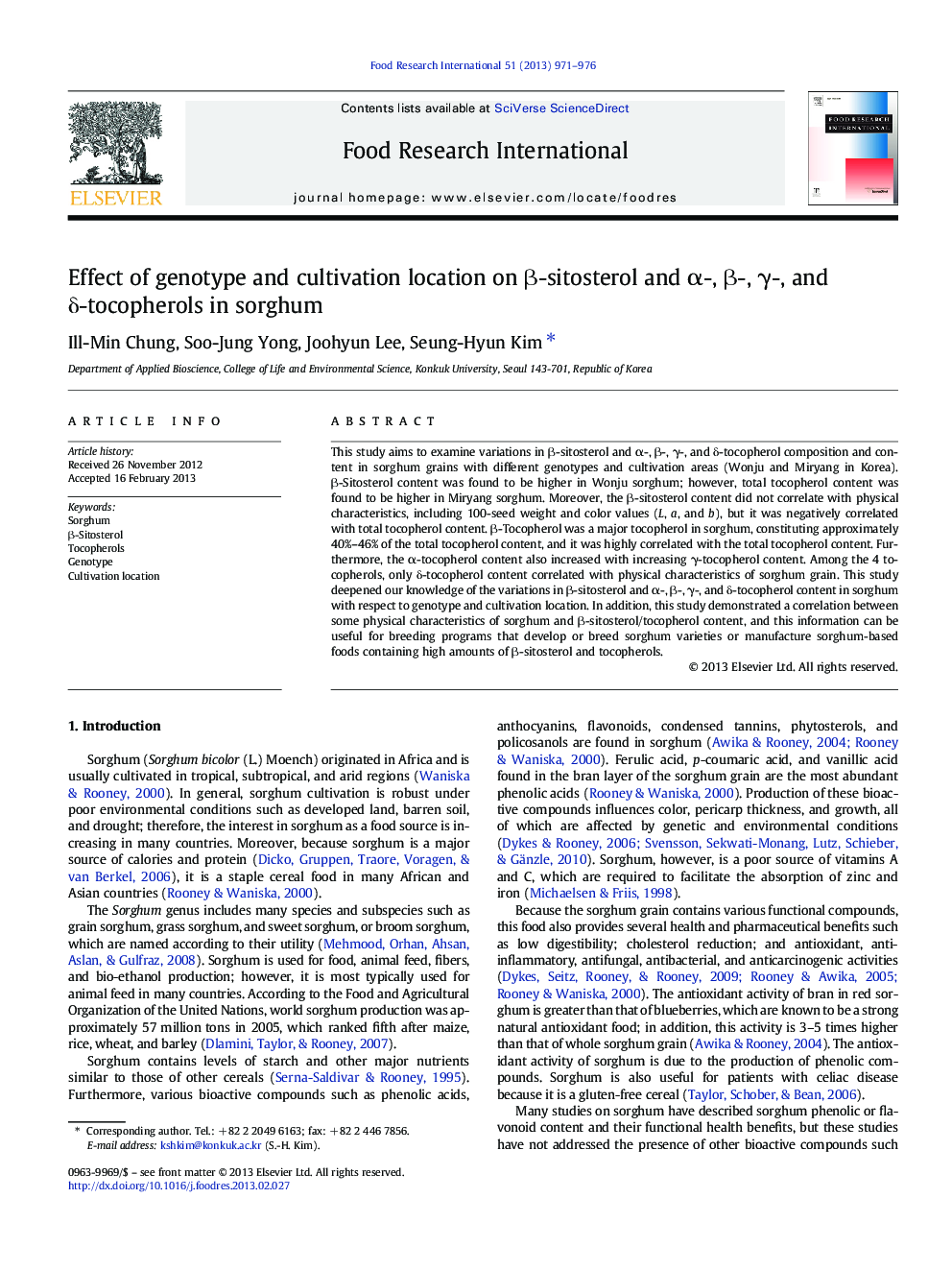| Article ID | Journal | Published Year | Pages | File Type |
|---|---|---|---|---|
| 6398145 | Food Research International | 2013 | 6 Pages |
This study aims to examine variations in β-sitosterol and α-, β-, γ-, and δ-tocopherol composition and content in sorghum grains with different genotypes and cultivation areas (Wonju and Miryang in Korea). β-Sitosterol content was found to be higher in Wonju sorghum; however, total tocopherol content was found to be higher in Miryang sorghum. Moreover, the β-sitosterol content did not correlate with physical characteristics, including 100-seed weight and color values (L, a, and b), but it was negatively correlated with total tocopherol content. β-Tocopherol was a major tocopherol in sorghum, constituting approximately 40%-46% of the total tocopherol content, and it was highly correlated with the total tocopherol content. Furthermore, the α-tocopherol content also increased with increasing γ-tocopherol content. Among the 4 tocopherols, only δ-tocopherol content correlated with physical characteristics of sorghum grain. This study deepened our knowledge of the variations in β-sitosterol and α-, β-, γ-, and δ-tocopherol content in sorghum with respect to genotype and cultivation location. In addition, this study demonstrated a correlation between some physical characteristics of sorghum and β-sitosterol/tocopherol content, and this information can be useful for breeding programs that develop or breed sorghum varieties or manufacture sorghum-based foods containing high amounts of β-sitosterol and tocopherols.
⺠β-Sitosterol and tocopherols in sorghum was differed with cultivation location. ⺠β-Sitosterol and tocopherols contents were differed with genotype. ⺠β-Tocopherol (40%-46%) was a major tocopherol in sorghum. ⺠δ-Tocopherol highly correlated with grain color and 100-seed weight. ⺠α-Tocopherol content was correlated with γ-tocopherol content (r2 = 0.750ââââ).
